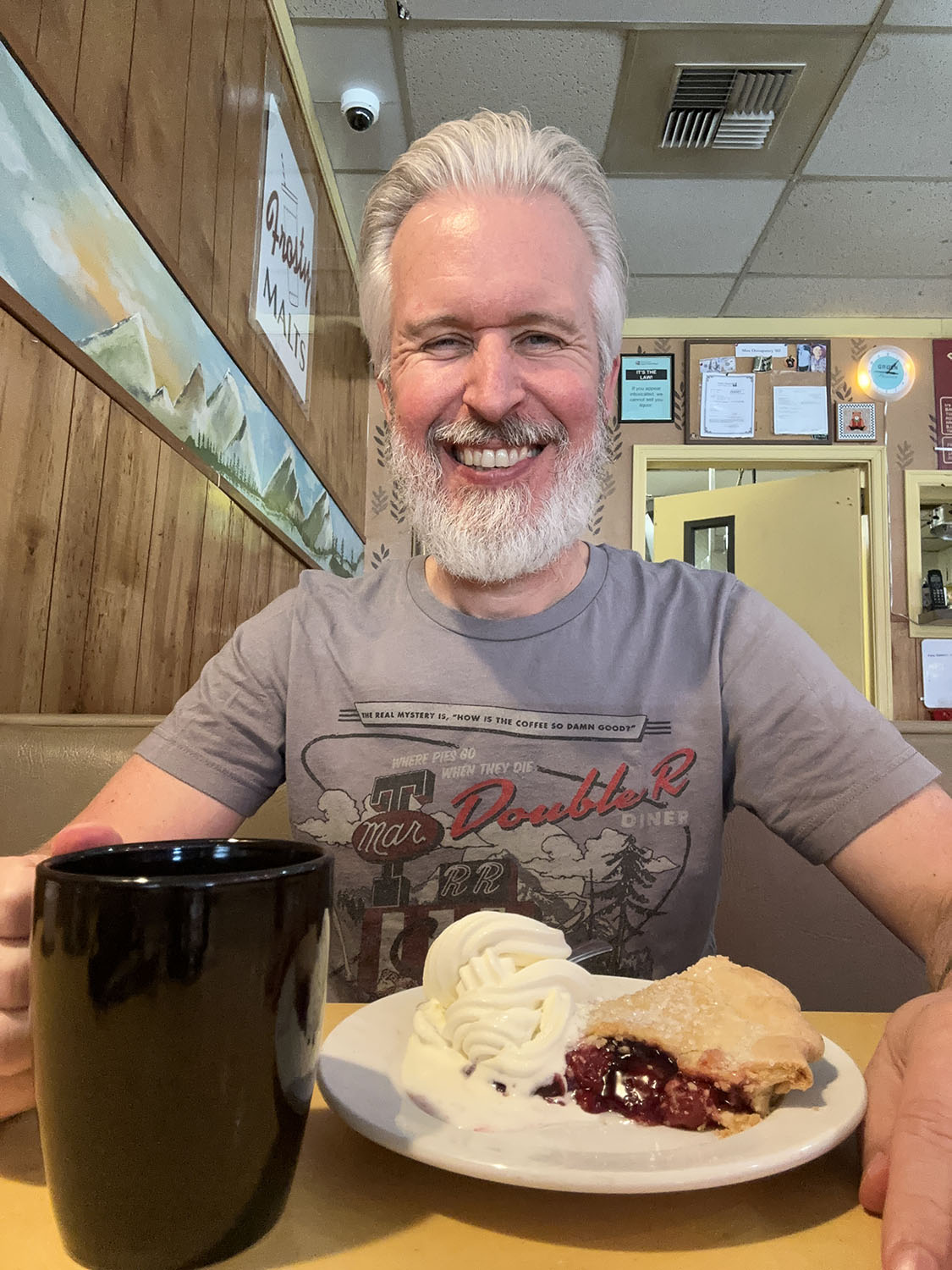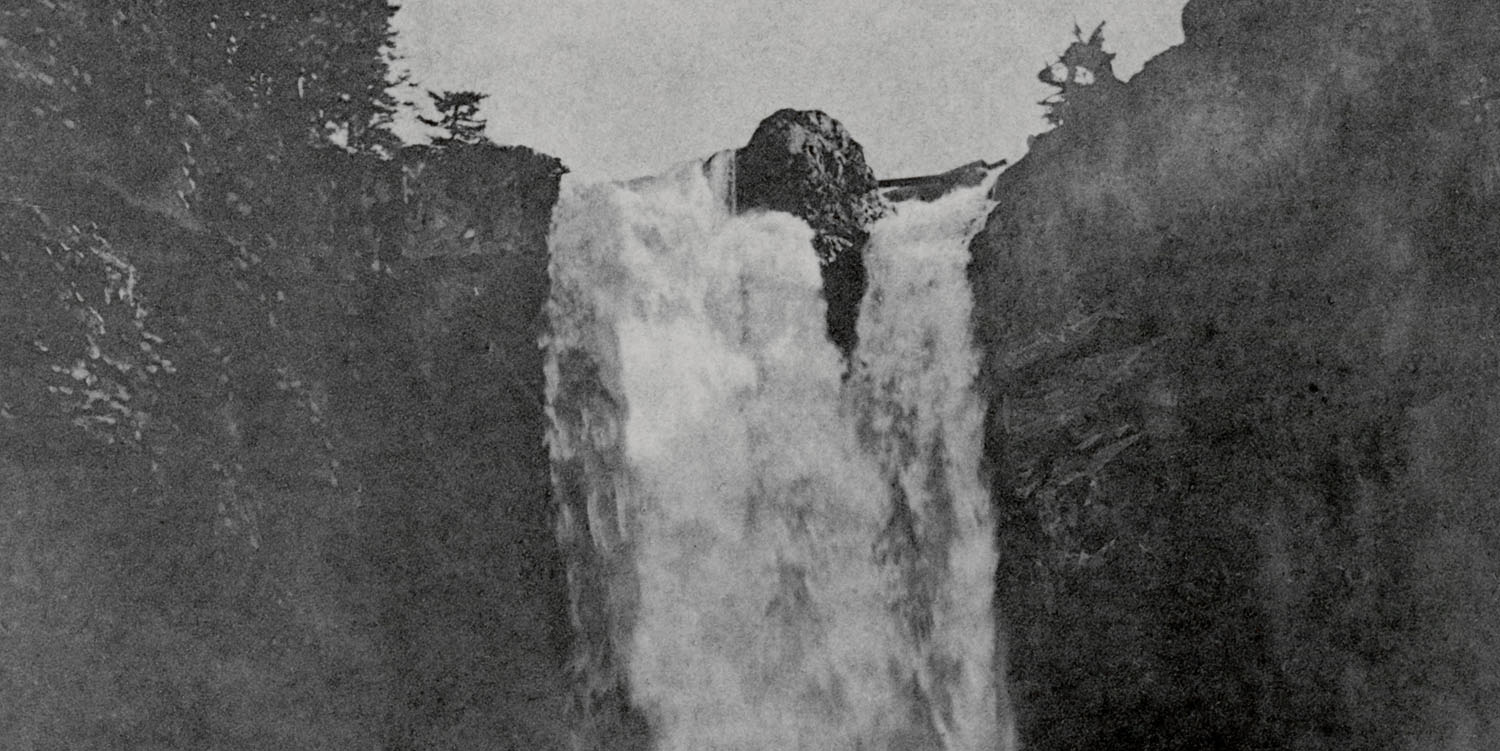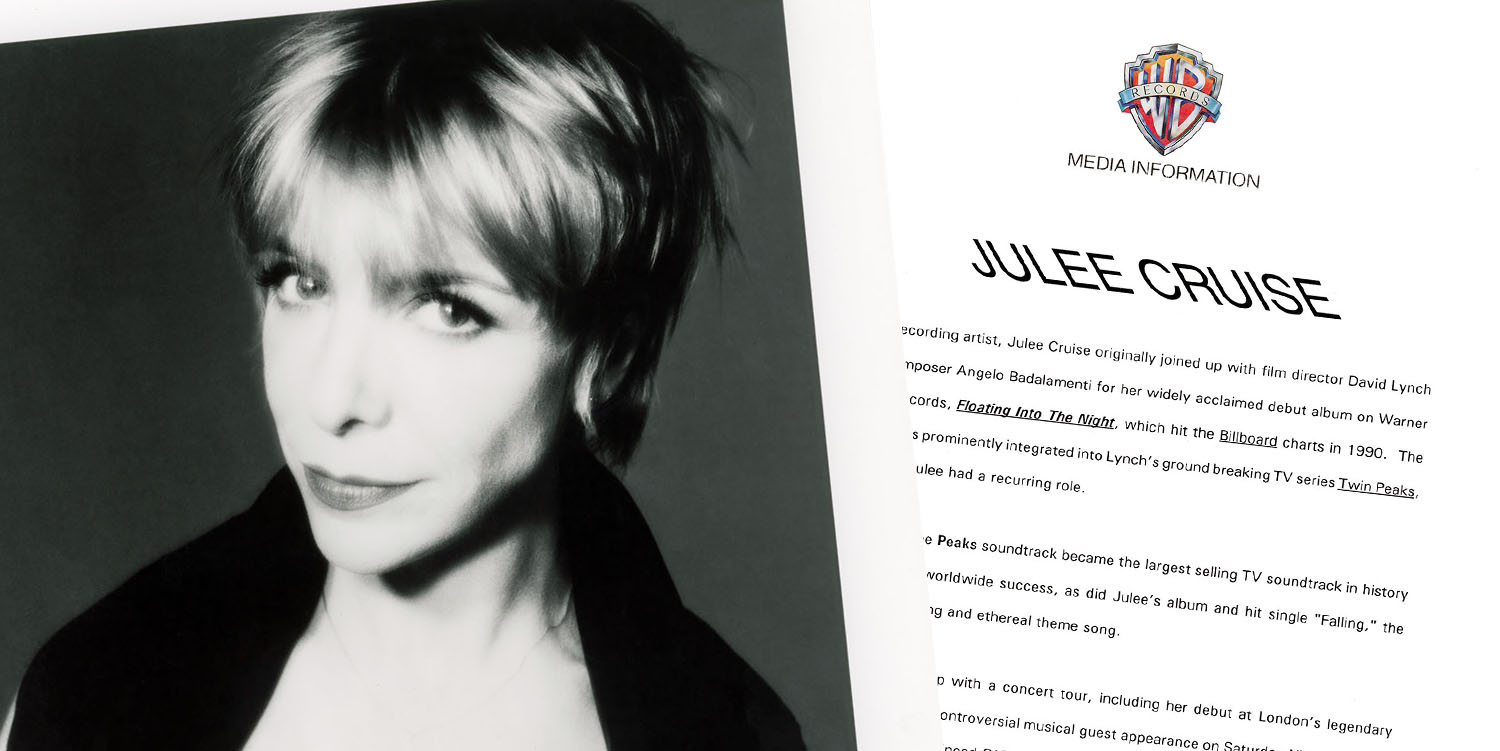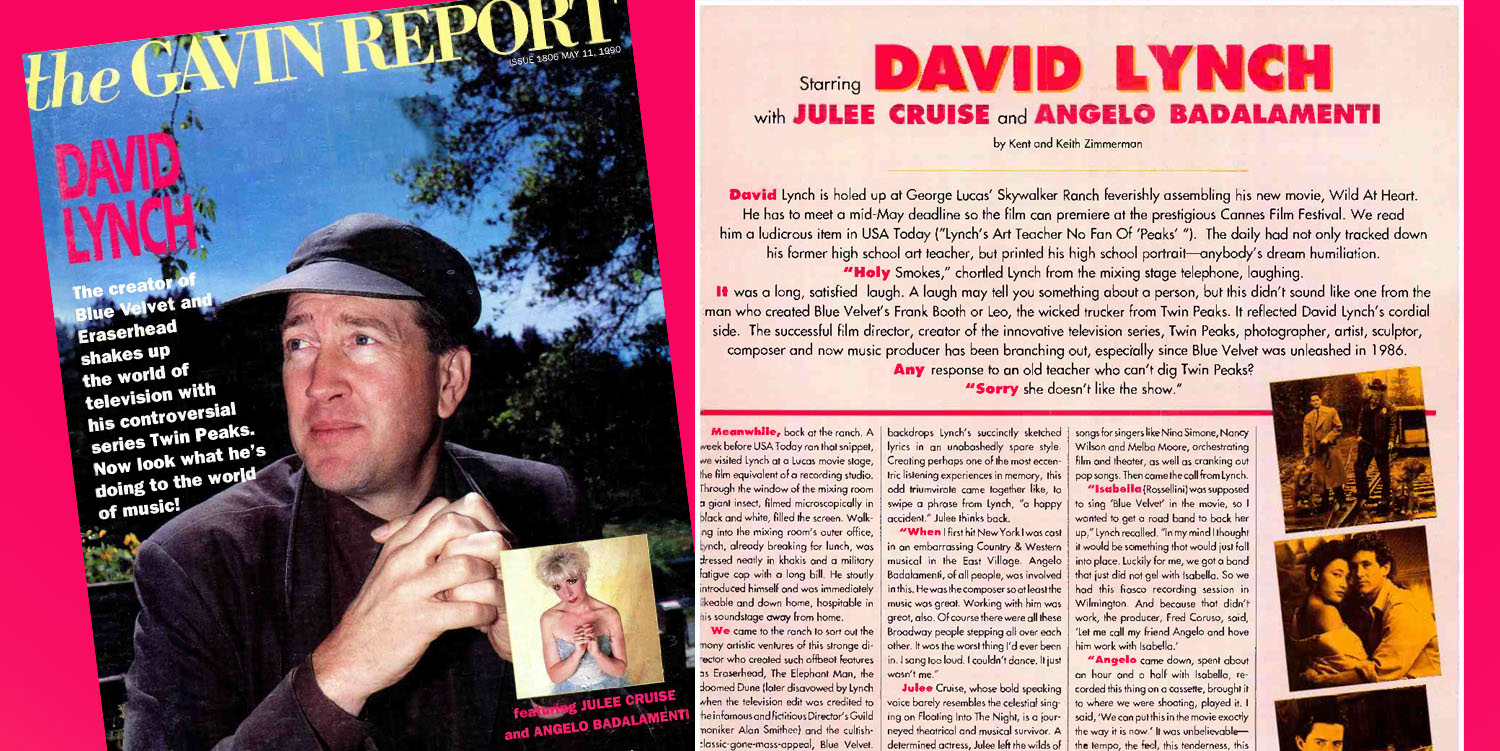The year 1992 was an exciting one for Twin Peaks fans. David Lynch’s feature film debuted at the Cannes Film Festival and in Japan on May 16. A few months later on July 3, the film would have a wider theatrical release in France. Naturally, magazines and newspapers would cover the film known as Twin Peaks: Le Film (or Twin Peaks: The Film). One outlet known as “Max” released a supplemental magazine to their issue 37 published in June. Using Google Translate, here is a look at the magazine which contains an interview with David Lynch.
WHAT IS MAX MAGAZINE?

Italian journalist , playwright, writer, and director Paolo Pietroni launched “Max” magazine in Italy in 1985. This monthly RCS magazine was considered a “women’s magazine for men … with high aesthetic aspirations: characters who set fashion, myths or almost from the world of entertainment (cinema rather than TV), exclusive and suggestive photos, a little unbalanced towards an overly free sexuality and, often, ambiguous for the public.”
He expanded publications to the countries of Germany, Spain, Greece and France. The latter was published between 1988 and 2006 before being discontinued.

The supplement to issue 37 was released in June 1992, post Cannes but before a wider French theatrical release. The cover included key art used in international releases (similar advertising would also be found in Germany in August 1992).
The image features Laura Palmer (Sheryl Lee) from the Red Diamond City Motel along with a profile of Special Agent Dale Cooper. His image is from the scene with Laura in the Red Room from the film’s end. The cover also advertised an exclusive interview with director David Lynch.
LETTER FROM EDITORIAL DIRECTOR JEAN-MARC THÉVENET

French publisher , comic book writer , television producer and exhibition curator, Jean-Marc Thévenet served as Editorial Director for “Max” from 1989-1993.

He wrote an editorial that graced page 3 of the supplemental issue which I translated using Google Translate (which means the translation may not be accurate).
“Impatient, France waited… Like the Fourth World countries receiving food aid in the form of powdered milk and quintals of rice, the television continent, well after the others, had already had its fill of Dallas, by Monty Python. Quite naturally the arrival of Twin Peaks, directed by David Lynch, should only arouse emotion and reactions during its broadcast on the “late” La Cinq. Shouldn’t we have seen a symbol in the choice of this channel?… But no, France quickly fell asleep in front of these complex episodes where there were no stagecoach attacks, no fleeting love between Bob and Patricia and OPA on Los Angeles. Twin Peaks, the TV movie, disappeared with as much indifference from the small screen as Yves Mourousi from the 1 p.m. news in 198…? But the good-natured French film buff promised to do it again with the film Twin Peaks. In the credits, a cast worthy of a new Hollywood version: Chris Isaak, singer, surfer, handsome guy and lover of beautiful Hawaiian ties, David Bowie, Iman’s husband, Harry Dean Stanton, credited as Cold Hand Luke (Stuart Rosemberg, 1967), Macadam à deux lanes (Monte Hellman, 1971) and others Paris-Texas (Wim Wenders, 1984), Kyle MacLachlan, already present in the series. Presented at Cannes, Twin Peaks did not win any prizes or any runners-up. Normal. After having praised Eraserhead (1977), Elephant Man (1980), Blue Velvet (1985) and Palme d’Or, Sailor and Lula in 1990, the critics, with this perfume of snobbery with which they love to spray themselves after the shower, could not dismiss David Lynch than his next film. Normal. What is he accused of? Lynch? Among other things, an inaccessible story, a soundtrack closer to Guns’n’Roses from the soundtrack of Tous les matins du monde and being produced by Francis Bouygues. Normal. In France, the execution post is equidistant from the red carpet giving access to the Palais des Festivals.
A bad trial if ever there was one since, at the same time, films with dark and “labyrinthine” stories were widely applauded… tual, disturbing with this very Lynchian alphabet consisting of mixing a small provincial town, a disturbed blonde, a father with perverse tendencies, smooth images on well-kept lawns, chaos of the night and certified alcoholic shots. But, above all, David Lynch, beyond all aesthetics, sets foot in the dish of another America. If, today, the planet of ethnologists, sociologists, urban planners, police officers and politicians bend over vertigo over the burning and bloodshed of the great American cities, it is damaging that no one has understood until now that Lynch was undoubtedly the counterpart of trendy black directors Spike Lee. At Los Angeles Ghetto Version Boyz’n’ The Hood, David Lynch completes the screenplay disaster of American malaise (soft euphemism) by sending a call probe Linked to Twin Peaks in the world of children White people who, failing to wear sneakers hypertrophied and caps with the X logo, see the end of a world (theirs) coming great speed. This is how Twin Peaks, beyond any aesthetic debate, does not should not be returned to the cupboard << masterpieces not masterpieces. Twin Peaks via cinema reflects with a rare precisely the shadows and colors that will make up this end of the century.”
The page also contains a cropped publicity photo of Laura Palmer leaning against a wall. The caption reads: “SHERYL LEE. Twenty-five years old, a yoga enthusiast, in the film she returns to the role that made her famous around the world with the TV series, that of the disturbing Laura Palmer, the main heroine of ‘Twin Peaks’.”
INTERVIEW WITH DAVID LYNCH

The next pages contain more publicity images from the film including Gordon Cole (David Lynch) standing behind his desk calling Special Agent Chet Desmond.
Captions for these photos include:
- DAVID BOWIE. The English singer here plays the role of Phillip Jeffries, FBI agent.
- CHRIS ISAAK was born on June 26, 1956 in Stockton, California. A singer revealed by the hit “Blue Hotel” in 1987, he plays special agent Chester Desmond here.
- LAURA PALMER AND DALE COOPER reunited in the Red Room for a final confrontation, full of surprises…
- DAVID LYNCH treated himself to a little pleasure by playing Gordon Cole himself, the hard-of-hearing superior of Agent Dale Cooper. David Lynch was born on January 20, 1946 in Missoula (Montana, United States). Trained at the School of Fine Arts in Philadelphia, he began by directing short films. 1967: “The Alphabet” (short film). 1970: “The Grandmother” (medium length). 1977: “Eraserhead” (“Labyrinth Man”). Men-special performance at the 1978 Avoriaz festival. With John Nance, Charlotte Stewart, Jeanne Bates. 1980: “Elephant Man.” Grand Prix in Avo- riaz in 1981. With Anthony Hopkins, John Hurt, John Gielgud, Anne Bandcroft. 1984: “Dune”. With Kyle MacLachlan, José Ferrer, Linda Hunt, Sting. 1985: “Blue Velvet”. With Kyle MacLachlan, Isabella Rossellini, Dennis Hopper. 1988: “Twin Peaks” (TV series). With Lula” (“Wild at Heart”). Palme d’Or at Cannes in 1990. With Nicolas Cage, Laura Dern, Isabella Rossellini, Willem Dafoe.
Here is a transcription via Google Translate Lynch’s interview conducted by Éric Libiot.
“Lynch the wisp persists and signs. Unpredictable, devious and inspired, he offers us with ‘Twin Peaks’, once again, a brilliant lesson in pleasure and freedom. Interview.
Max: After making the Twin Peaks series, why make a film with the same characters?
David Lynch: I really wanted to understand why, in the series, Laura Palmer is murdered. I love this woman, I love the mystery in her, and I wanted to get to know her better.
Max: When writing the script, did you think about those who don’t know the series?
D.L.: The film is primarily aimed at fans of the series. But I always had in mind those who would encounter Twin Peaks for the first time; They had to understand the story and have fun following it. That said, there are, of course, details that are only understandable by die-hard fans…
Max: Do you really think that the uninitiated will understand the film?
D.L.: But not everyone who has seen the series has necessarily understood it, so… Besides, what does the word understand mean? Each viewer has their own vision. This can happen on the level of the unconscious, of sensation, of fear, of desire… Understanding a phenomenon works on several levels.
Max: And yourself, did you always understand the images you filmed?
D.L.: Yes, 100%.
Max: We still sometimes have the feeling that an idea or an image crossed your mind, and that you put it in the film without really knowing what it means.
[The interview continued on Page 6]

D.L.: Yes, that can happen. But I believe that, when you write a screenplay, you are immersed in a process which means that if an idea comes out of nowhere, it still ends up being coherent with the whole. Ideas act and react with each other. As long as they are justified, even on an unconscious level, they work in the spectators.
Max: We feel you in perpetual turmoil…
D.L.: That’s right, but I think everyone works like that. Ideas keep exploding in our heads without us understanding why. The trick is to be available to capture these ideas. It’s my job.
Max: In the film, there are an impressive number of doors opening and closing. Do you have a special relationship with doors?
D.L.: Yes, I love doors, I love openings. I like knowing that there is something behind it. And I like to imagine what we can find there.
Max: A bit like a barrier between reality and imagination?
D.L.: Yes, but I like barriers less, because we can see through them. The mystery of a door is only revealed if you open it. You must then look at what is on the other side, venture there cautiously, and the imagination will do its work.
Max: You are a painter, you are interested in You are interested in sculpture and music, but you have chosen to make cinema. For what ?
D.L.: Because cinema is the meeting of all these arts. For Twin Peaks, I worked a lot on the music with composer Angelo Badalamenti. It gave me a glimpse of a world that I didn’t know, even though I have always been passionate about sound. I have never worked so much the music was better than on this film.
Max: Why is this film produced by a French production house (Ciby 2000, whose president is Francis Bouygues, Editor’s note)?
D.L.: Quite simply because Francis Bouygues gave me both the money and the freedom to make the film I wanted.
Max: Truly total freedom?
D.L.: Really. It would have been stupid to refuse such a proposal. Especially since, in the United States, very few directors have the final cut (total mastery of film editing, Editor’s note). Working for the big studios is like working for the army. You must be silent, obey; the most senior is the producer, not the director.
Max: One of the characters in the film says that life is full of mystery. You could use this sentence as you wish. account ?
D.L.: Yes, completely. I often have the impression of being a detective investigating phenomena that we do not understand.
Max: And your job is to reveal the results of the investigation to the public?
D.L.: Yes and no. I put on the screen what I think. But once the film is shown, it escapes me; I no longer control anything. It is up to the viewer to in turn project their own images.
Max: Between David Lynch and Laura Palmer, is it a love story?
D.L.: Yes.
Max: But are you going to separate now?
D.L.: No, I’m still in love with her.
Max: Is it mutual?
D.L.: You would have to ask him.
Max: How do you explain the success of the Twin Peaks series in the United States?
D.L.: I don’t explain it. This funny story must have come at the right time. The mystery mechanics worked, and the people wanted to understand, that’s it…
Max: In France, the series did not have the same impact…
D.L.: It’s even the country in the world where it did the least well. Maybe because it’s in France that there are the most holidays, and the series can’t stand it if we miss an episode. The proof is that the country where it has had the most success is in Japan. And the Japanese never take vacations.
Max: Working for two years on the same series is a bit long, isn’t it?
D.L.: Initially, the series was not supposed to last this long. In my mind, it wasn’t even a question of revealing who killed Laura Palmer. I wanted to leave all the questions unanswered. But there was such pressure that we made a sequel.
Max: What is success?
D.L.: Freedom.
Max: And the money?
D.L.: Money gives you freedom. I really like money, but it’s not the most important thing. aunt, then?
Max: What is the most important thing?
D.L.: Creation.
The caption for the photo reads: “Sheryl Lee, David Lynch and Moira Kelly on the set of the film. Filming began on September 4, 1991 near Seattle and concluded in Los Angeles at the end of October of that year.”
TWIN PEAKS: 51,201 RESIDENTS, A LOG AND SOME MONSTERS
On pages 8-9, author Cécile Thibaud shares insight and anecdotes about the first two seasons of Twin Peaks.
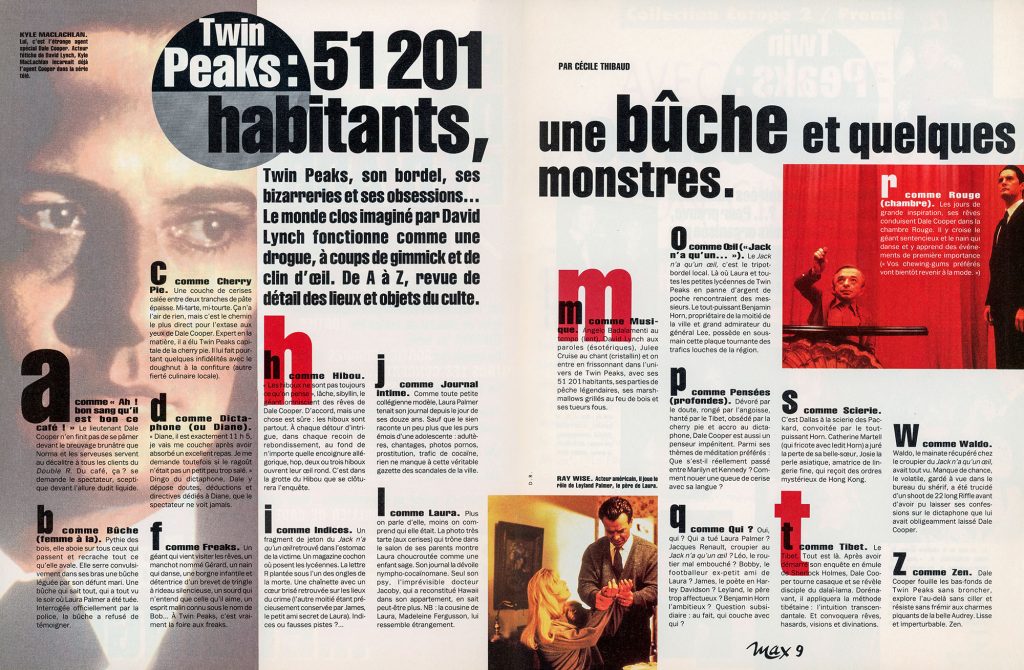
Caption for the photos read:
- KYLE MACLACHLAN. He is the strange special agent Dale Cooper. David Lynch’s favorite actor, Kyle MacLachlan already played
Agent Cooper in the TV series. - RAY WISE. American actor, he plays the role of Leland Palmer, Laura’s father.
“Twin Peaks, its mess, its quirks and its obsessions… The closed world imagined by David Lynch works like a drug, with gimmicks and winks. From
A to Z, detailed review of places and objects of worship.
- A is like “Ah! Damn, this coffee is good!” Lieutenant [sic] Dale Cooper never stops swooning over the brownish beverage that Norma and the waitresses serve to all the customers at the Double R. Coffee, that? the spectator wonders, skeptically than in front of the appearance of said liquid.
- B is like Bûche (woman in the). A wood Pythia, it barks at everyone who passes and spits out everything it swallows. She convulsively hugs a log left by her late husband. A log who knows everything, who saw everything the night Laura Palmer was killed. Officially questioned by the police, the log refused to testify.
- C like Cherry Pie. A layer of cherries wedged between two slices of thick dough. Half tart, half pie. It doesn’t seem like much, but it’s the most direct route to ecstasy in Dale Cooper’s eyes. An expert in the field, he elected Twin Peaks the cherry pie capital. However, he does some unfaithfulness with the donut with jam (another local culinary pride).
- D like Dictaphone (or Diane). “Diane, it’s exactly 11:5 a.m., I’m going to bed after having an excellent meal. I wonder, however, if the stew wasn’t a little too salty.” Crazy about the dictaphone, Dale deposits doubts, deductions and directives dedicated to Diane, whom the spectator never sees.
- F like Freaks. A giant who comes to visit dreams, a penguin [sic] named Gérard, a dwarf who dances, a one-eyed child who holds a patent for a silent curtain rod, a deaf man who only hears the one he loves, a known evil spirit under the name Bob… In Twin Peaks, it’s really a freak show.
- H like Owl. “Owls are not always what we think”, cowardly, sibylline, the omniscient giant of Dale Cooper’s dreams. Okay, but one thing is certain: owls are everywhere. At every twist of the plot, in every nook and cranny, at the bottom of any allegorical corner, presto, two or three owls open their round eyes. It is in the Owl Cave that the investigation will end. as clues.
- I is a fragment of the one-eyed Jack token found in the victim’s stomach. A dirty magazine where high school girls pose. The letter R stuck under one of the dead woman’s nails. A chain with a broken heart found at the crime scene (the other half being carefully kept by James, Laura’s secret boyfriend). Clues or false leads?…
- J like journal. Like any model little schoolgirl, Laura Palmer kept her diary since the day she was twelve. Except that hers tells a little more than the pure emotions of a teenager: adultery, blackmail, porn photos, prostitution, cocaine trafficking, nothing is missing from this veritable gazette of the city’s scandals.
- L like Laura. The more we talk about her, the less we understand who she was. The very tart photo (with cherries) which sits in her parents’ living room shows Laura pampered like a good child. Her diary reveals her to be a nympho-cocaine addict. Only his shrink, the unpredictable Doctor Jacoby, who recreated Hawaii in his apartment, perhaps knows more. NB: Laura’s cousin, Madeleine Fergusson, looks strangely like her.
- M like Music. Angelo Badalamenti on the tempo (slow), David Lynch on the lyrics (esoteric), Julee Cruise on vocals (crystalline) and we shudder into the universe of Twin Peaks, with its 51,201 inhabitants, its legendary fishing trips, its marshmallows roasted over a wood fire and its crazy killers.
- O for eye (“Jack only has one…”). The One-Eyed Jack is the local gambling den and brothel. Where Laura and all the little high school girls from Twin Peaks who were short of pocket money met gentlemen. The all-powerful Benjamin Horne, owner of half the city and great admirer of General Lee, secretly possesses this hub of shady trafficking in the region.
- P like (deep) Thoughts. Devoured by doubt, consumed by anxiety, haunted by Tibet, obsessed with cherry pie and addicted to the dictaphone, Dale Cooper is also an unrepentant thinker. Among his favorite meditation themes: What really happened between Marilyn and Kennedy?How to tie a cherry stem with your tongue?
- Q like who? Yes who? Who killed Laura Palmer? Jacques Renault, croupier at One-Eyed Jacks? Léo, the foul- mouthed trucker? Bobby, Laura’s
ex-boyfriend footballer? James, the poet with a Harley Davidson? Leland, the overly affectionate father? Benjamin Horne the ambitious? Additional question: by the way, who is sleeping with whom? - R like Red (room). The days of great inspiration, his dreams lead Dale Cooper to the Red Room. There he meets the grandiloquent giant and the dancing dwarf and learns of some very important events (“Your favorite chewing gum will soon come back into fashion.”)
- S for Sawmill. It’s Dallas at the Packard sawmill,coveted by the all-powerful Horne. Catherine Martell (who is involved with said Horne) has sworn the loss of her sister-in-law, Josie the Asian pearl, lover of fine lingerie, who receives mysterious orders from Hong Kong.
- T like Tibet. Tibet. Everything is here. After starting his investigation as an emulator of Sherlock Holmes, Dale Cooper turns his back and reveals himself to be a disciple of the Dalai Lama. From now on, he will apply the Tibetan method: transcendental intuition. And will summon dreams, chances, visions and divinations.
- W is like Waldo. Waldo, the mynah retrieved from the One-Eyed Jack dealer, had seen it all. Bad luck, the bird, kept in custody in the sheriff’s
office, was killed with a shot of .22 long Riffle before being able to leave his confessions on the dictaphone that Dale Cooper had obligingly left for him. - Z for Zen. Dale Cooper searches the underbelly of Twin Peaks without flinching, explores the beyond without blinking and resists the spicy charms of the beautiful Audrey without shuddering. Smooth and imperturbable. Zen.
TWIN PEAKS: LA SOIRÉE

On page 10, there were photos from the Twin Peaks: Fire Walk With Me party held during the Cannes Film Festival on May 16, 1992. Dugpa wrote extensively about the film’s premiere and afterparty in this article. It’s awesome to see additional photos from the gathering.
The caption reads: “Who said that Cannes evenings no longer exist?… As proof, the Twin Peaks evening organized by Edem Productions under the aegis of Ciby 2000, with Europe 2 and “Max”. Flash on a few guests.”
The caption for image 3 misidentifies Walter Olkewicz as C.H. Evans who played Jack at Hap’s. Also interesting to see a young Johnny Depp, Spanish film director Pedro Almodóvar and Julie Delpy were also at the party.
BACK COVER WITH ESTELLE HALLYDAY
As previously discussed, editors at “Max” were intentional about including “suggestive images” in their magazine. This supplemental issue included an image of supermodel Estelle Hallyday as a teaser for issue 37. The red circle says something like “Available at your newsstand.”
Known today as Estelle Lefébure, she had married French singer, songwriter, actor and amateur sports car racer, David Hallyday, on September 15, 1989. The couple had two children before they were divorced in 2001.
Discover more from TWIN PEAKS BLOG
Subscribe to get the latest posts sent to your email.



